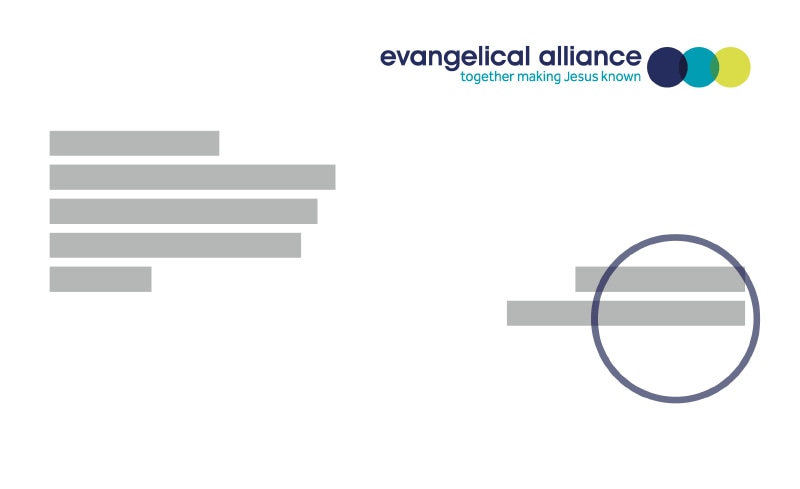Who am I? Who are we? What does it mean to be human? Ageless questions of identity like these have become more urgent of late.
Rapid social and technological change and heightened debates on ecology, poverty, race, modern slavery, abortion, euthanasia and sexuality have thrown them into sharp relief. They’re questions the Bible acknowledges frankly – not least through the words of the Psalmist, who assumes God’s existence but still asks Him: “What are humans that you are mindful of them, mortals, that you care for them?” (Psalm 8:4).
Elsewhere in Scripture, such queries are informed by the foundational teaching of Genesis 1:27, that God made humans in His own image. Later, for instance, Paul describes Jesus as the perfect embodiment of this image – the divine saviour whose death and resurrection redeem the corruption of God’s image by sin and bring eternal life to all who trust in Him (2 Corinthians 4:1 – 12).
Unpacking what it means to be God’s image bearers is a key part of what’s more formally called ‘theological anthropology’. The Latin term ‘imago Dei’ is often used in this context. Making sense of it entails both understanding what the ‘image of God’ meant in its original setting and how it might apply to shifting perceptions of human identity now. Scholars diverge on the finer details, but three core points reflect a broad consensus among evangelical theologians.
Firstly, the image of God in Genesis 1:27 applies to all people rather than just to particular individuals or groups. In many ancient societies, the divine image was reserved to a monarch or emperor; here, it’s present in every person. God might later have forged covenants with a particular people – Israel – but those covenants were fulfilled in the new covenant sealed by
Jesus’ sacrifice for people of all nations.
Granted, the universality of the imago Dei had underpinned commands to love one’s neighbour and respect aliens and strangers in the Old Testament (Leviticus 19:18, 33 – 34; Deuteronomy 10:19). In the New Testament, however, Jesus identifies those commands as defining the very heart of the law (Matthew 22:40), and in that context charges His followers with a great commission to take His good news of salvation to the whole world – to Jew and
Gentile alike (Matthew 28:16 – 20).
Later, Peter has a transforming vision which confounds his assumptions and convinces him that as a Jewish disciple of Jesus he can no longer “call anyone impure or unclean” (Acts 10:28). Likewise, Paul moves from persecuting Christians to insisting that in Christ neither Jewish nor Gentile Christians are superior to the other (Acts 9:1 – 31; Galatians 3:28).
Against this background, pioneers of religious toleration and human rights like John Milton, John Locke and John Stuart Mill cited the imago Dei in support of their ideas. William Wilberforce and Martin Luther King invoked it when opposing slavery and championing racial equality. It was also central to the witness of Christians against apartheid in South Africa.
Today, the Evangelical Alliance’s basis of faith affirms “the dignity of all people, made male and female in God’s image”, and we seek to live that out through our One People Commission as it strives to mobilise white, black, Asian and minority ethnic Christians in common action, and through our support of the World Evangelical Alliance Religious Liberties Commission. It also spurs us to back groups like A21 and Stop the Traffik as they work to combat the scandal of modern slavery, which reduces people made in God’s image to mere commodities. And it informs our championing of Christians Against Poverty, which recognises how economic deprivation can mar God’s image in humans.
Secondly, our creation in God’s image distinguishes us as humans from other living creatures, from the rest of the natural world, and from artefacts that we ourselves produce. By God’s grace, we’re distinctively endowed with qualities of reason, language, and altruism, which go hand-in-hand with the authority that God gives us over “the fish of the sea and the birds of the air, over the livestock, over all the earth, and over all the creatures that move along the ground” (Genesis 1:26).
Yet just as God delegates farming, fishing, mining and manufacture to us, He also charges us to carry them out sustainably, rather than simply for our own selfish gain. In the economy of Israel, that meant regulated harvests, gleanings for the poor and years of jubilee (Leviticus 23:24, 25:10). Today, it may mean eating food grown locally rather than intensively farmed produce flown thousands of miles. It may mean reducing carbon emissions to help reverse global warming. More generally, it may mean resisting the lure of consumerism, in which created objects become new versions of the idols that led Israel astray (cf. Romans 1:25).
It may mean taking a break from our electronic devices to share meals together around a table; it may mean making presents for friends and relatives rather than always buying them. Likewise, expressing God’s image creatively through artistic endeavour – through sculpture, painting, architecture, music, theatre or literature crafted for God’s glory – can be an act of praise which in turn brings inspiration to others. At its best, sport can do something similar.
Thirdly, being made in God’s image means our identity is divinely granted, not something we can construct or deconstruct at will. It’s God’s image in us, not our image to create or reinvent. At its most basic, it means we’re blessed by God with the gift of life itself – the life that animates Adam and Eve (Genesis 2:7, 22 – 24) and that they’re charged to replicate as God tells them to “be fruitful and multiply” (Genesis 1:28).
Under this same mandate humans are “knit together” by God in the womb (Psalm 139:13), so God’s image is conferred on the pre-born as well as on the born. On these grounds, evangelicals stress that to “terminate a foetus” is, in fact, to take a human life that humans have no right to take (cf. Deuteronomy 32:39). Yet, because the mother in such cases is made in God’s image too, she deserves full support to consider an alternative – whether keeping the child or offering it for adoption.
The recent Irish campaign backed by the Evangelical Alliance puts it well: Both Lives Matter. Similar applications of the imago Dei apply to euthanasia: we’re not at liberty to ‘play God’ in proactively causing a patient’s death, but we should support improved palliative and hospice care so that the dying person’s end might be as dignified and peaceful as possible.
God’s image in humanity is also to be expressed in relational wholeness: just as His approved context for reproduction is faithful marriage between a man and a woman, His prescribed foundation for society is the family (Genesis 1:27). These imperatives are powerfully reiterated by Jesus (Matthew 19:4 – 6) and underlined by Paul (Ephesians 5:21 – 33).
As John Stott notes, both the commonness of humanity and the differentiation of male and female in God’s image become emblematic for church and society as a whole: in a still-fallen world each is called to unity, but unity in reconciled diversity. As an alliance of evangelical Christians, the Evangelical Alliance strives to bring biblically faithful believers, congregations and networks together for gospel ministry more effectively than if they exercised such ministry alone.
As we do so, we seek healing in our wider communities. But we’re not aiming to form a single church structure or institution. Our createdness in God’s image and our redemption in the Christ who is “the image of the invisible God” (Colossians 1:15), means that we celebrate our calling to be one people, but express that calling in different yet complementary ways.
As we’ve seen, the doctrine of the image of God is essential for Christian understanding of what it means to be human, and to thrive in society. Sometimes it’s inspired radical social change; on other occasions it’s stood as challenge to ungodly cultural trends. Either way, its importance is profound, and as relevant today as it ever was.



